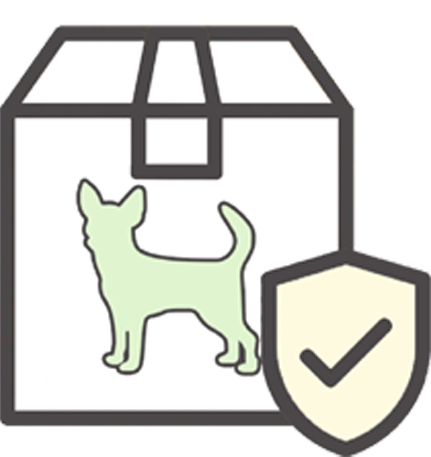Do Dogs Get Hay Fever?
Updated On: Friday, February 21, 2025 04:47:07 AM America/Los_Angeles
While the changing seasons can be exciting for many, it can be downright dreadful for those of us who struggle with seasonal allergies like hay fever. If you’ve noticed your dog sneezing or itching, your dog might be experiencing a bout of allergies too. But how can you tell if what your dog is experiencing is hay fever and what can you do to remedy it? In this DoggieLawn post, we discuss the basics of what hay fever is, how to recognize it, and how to treat it.
Photo by Hiro Takashima
What is hay fever and can dogs get it?
Dogs can be afflicted with many of the same allergies humans are, including hay fever. Unlike allergies to foods or medicines, hay fever is an airborne allergy. Airborne allergies are an immune system response to something that can be carried through the air such as pollen.
You might be thinking, “Wait, we’ve been nowhere near hay. How does my dog have hay fever?” Though called hay fever, the triggers are actually much more varied. Triggers include tree pollen, grass pollen, spores from fungi and molds, and dander.
What are the symptoms of hay fever?
Hay fever symptoms can mimic those of a common cold. So how can you tell if your precious pup is dealing with allergies or a cold? If your dog is experiencing any of the below symptoms, it might just be hay fever.
- Runny nose (watery discharge)
- Sneezing
- No fever
- Red, itchy, and/or inflamed skin
- Skin that is irritated from repeated grooming or scratching
If your dog routinely exhibits these symptoms at a certain time of the year, that could be an indication that your fur baby has allergies. Symptoms can intensify on a windy day, during dry conditions, or with already weakened immune systems. Or, if your dog seems bothered while on a walk but seems completely fine shortly after coming back home (or vice versa), that’s a pretty good cue that something in their environment is bothering them. And despite being called hay fever, your dog will actually not experience any fever.
How do you treat hay fever?
Because hay fever is the result of environmental triggers, refraining from exposing your dog to those allergens is the best way to prevent an onset of allergic reactions. This, of course, can be easier said than done. If your dog is allergic to your cat’s dander, then this can get tricky.
If going outdoors is a trigger, then you might have to potty train your pup to use an indoor potty for dogs. Having a pee pad handy can be helpful for those days when you know the pollen level is especially high outdoors. If you absolutely cannot avoid the allergen, be sure to bathe your dog after they’ve been exposed to them. You can also supplement their diet with foods that boost immunity as well as soothe itchy skin with balms. And as always, if you feel your pup’s health is at risk, we recommend speaking with your vet to be safe.


